When we think about eyes, for example, human eyes exhibit varieties of coloration, like black and different shades of brown, blue, and green.
Not only humans, but other animals also exhibit different colorations of eyes, from black to yellow.
Eyes play a very important role not only in vision but also in animal appearance.
In this article, we primarily focused on the animals that have black eyes. So here are the 30 animals with black eyes.
30 Animals with Black Eyes
1. Black-eyed leaf frog
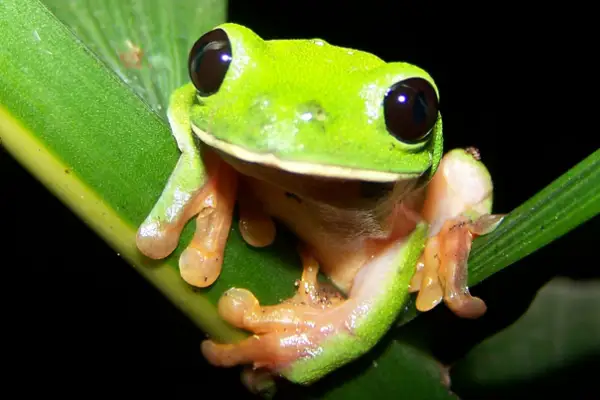
| Scientific name | Agalychnis moreletii |
| Habitat | moist subtropical lowland mountainous forests and wetland |
| Size | 5.5 to 8.5 cm |
| Diet | insects, spiders, and other small invertebrates |
Morelet’s tree frog, black-eyed leaf frog, and Popeye Hyla are some of the common names of Agalychnis moreletii.
They are known for their bright green coloration and bulging black eyes.
You can spot them in Belize, El Salvador, Guatemala, Honduras, and Mexico, inhabiting moist subtropical lowland mountainous forests and wetlands.
Their mating behavior is fascinating: females are drawn to males that have the loudest and longest mating calls.
2. Black-headed grosbeak
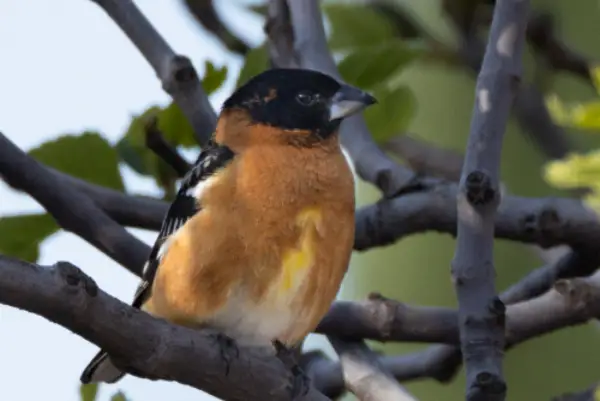
| Scientific name | Pheucticus melanocephalus |
| Habitat | suburbs, desert thickets, and mountain forests |
| Size | 7.1-7.5 in (18-19 cm) |
| Diet | Mostly insects, seeds, and berries |
Let’s move on to the second animal on our list, which is the black-headed grosbeak.
This creature has such an alluring appearance that it might instantly win you over as a fan.
These species’ females are quite dull-colored, but the males have a conspicuous black head, black wings, and a tail with white spots.
Black eyes are a common characteristic of them. What about them most delights me, you know? It’s the hue of their eggs.
They lay pale, blue, or gray eggs in their open saucer-shaped nest.
3. Harbor Seals
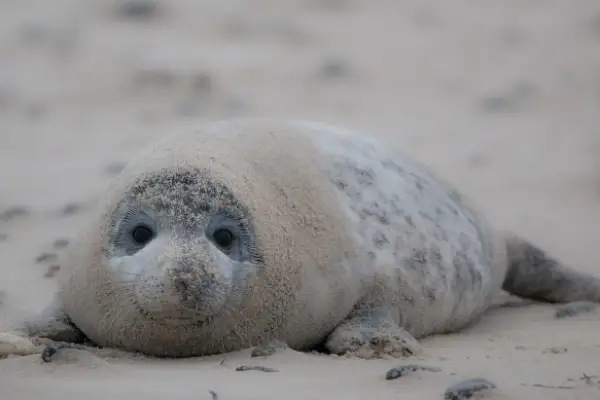
| Scientific name |
|
| Habitat | Coastal waters and rocky shores |
| Size | up to 1.85 m (6.1 ft) |
| Diet | Fish, Squid, Octopus, Lobsters, and Eels |
This small creature of the northern hemisphere has a distinctive V-shaped nose, a rounded head, and big black eyes.
Harbor seals haul out and rest on rocks, reefs, beaches, and drifting glacial ice during their rest hours.
They exhibit a range of coloration, from brownish black to tan or grey, with certain spots.
They do not have external ears, which is characteristic of seals; only ear canals are visible behind their eyes.
4. American Crow

| Scientific name | Corvus brachyrhynchos |
| Habitat | Woodlands, farms, fields, river groves, shores, and towns |
| Size | 15.8–20.9 in. (40–53 cm) |
| Diet | typically earthworms, insects, and other small animals, seeds, and fruit |
Corvus brachyrhynchos, or American crow, is commonly found in North America. With 40–50 cm (16–20 in) length and all black iridescent feathers or black eyes.
Males in these species are larger than females. They are the bioindicators of the West Nile virus to see how much the virus is spreading.
These omnivorous animals like to feed primarily on earthworms, insects, other small animals, seeds, and fruit.
They are considered as intelligent as humans and are highly cunning. Just think about themselves.
5. Raven
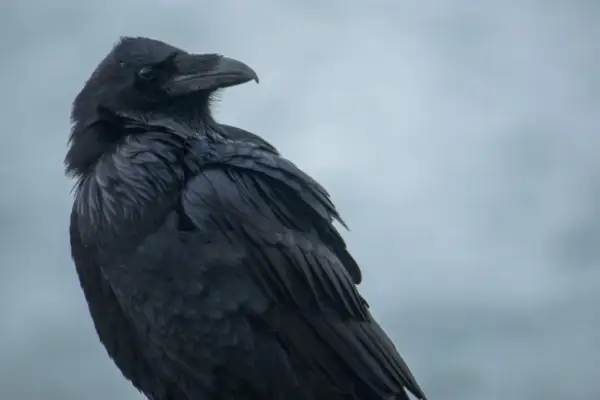
| Scientific name | Corvus corax |
| Habitat | woodlands, usually in coniferous forests and along rocky coastlines |
| Size | 54 to 71 cm (21 to 28 in) |
| Diet | From small mammals to nesting birds, eggs and berries |
I assume you’re wondering why I used a crow once more. But these are ravens, though they belong to the same genus and also share similarities with the American crow. But they differ from them in terms of size and other characteristics.
The most common thing that they share is their black eyes.
A wide range of vocalizations can be seen in this creature, like mimicking human sounds, whistles, etc.
They are omnivorous, and their diet depends on the location, season, etc. They have the largest brains in the class, which makes them amazing.
6. Orca
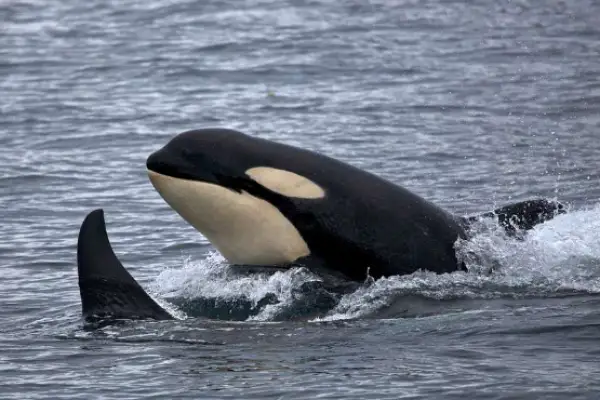
| Scientific name | Orcinus orca |
| Habitat | from Arctic to Antarctic regions to tropical seas |
| Size | 5 to 8 m |
| Diet | fish, seals, squid, sea lions, sea turtles, sharks, whale calves, and sea birds |
They are commonly known as killer whales because of their tendency to hunt and prey on larger whales.
This largest member of the oceanic dolphin butterfly is found in all marine environments, from the Arctic to the Antarctic.
Females are smaller as compared to males. They have an intriguing black and white body with a white underjaw and beautiful black eyes.
They are the apex predators, and people often call them wolves of the sea as they hunt in groups. Cannibalism is also seen in them.
7. A red-faced spider monkey

| Scientific name | Ateles paniscus |
| Habitat | Rainforest canopy |
| Size | 16-24 inches |
| Diet | Fruits, young leaves, flowers, young seeds, floral buds, roots, bark, honey, and small insects such as termites and caterpillars |
Have you ever seen a monkey with a red face? No, then let me introduce you to the Ateles paniscus, which is commonly known by many names like red-faced spider monkey, Guiana spider monkey, or red-faced black spider monkey.
This vulnerable species can be spotted in the rainforest canopy of northern South America, from Brazil to Venezuela.
As you can see in the picture, their whole body is covered with black hair, and they also have a red face with characteristic black eyes.
You can find them eating a wide variety of things, like fruits, young leaves, flowers, young seeds, floral buds, roots, bark, honey, and small insects such as termites and caterpillars.
8. Black Mamba
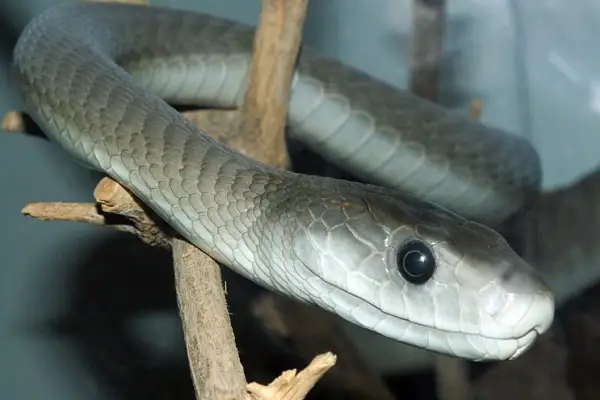
| Scientific name | Dendroaspis polylepis |
| Habitat | light woodland, scrub, rocky outcrops, and semi-arid savanna |
| Size | 2 to 3 m (6 ft. 7 in. to 9 ft. 10 in.) |
| Diet | Small vertebrates like birds, rodents, bats, hyraxes and bushbabies |
Black mamba sounds dangerous, right? Let me tell you, they are the second most venomous snake after the king cobra. You must be wondering, like me, why they are called black mamba even though they are not black in color.
They are called so because of their mouth interior, which is dark bluish-grey to nearly black.
These diurnal snakes exhibit both terrestrial and arboreal habitats. They are very quick, and you can’t even predict their next move.
The most attractive thing I found in them was their big black eyes. When these snakes bite, the person needs quick treatment, as their venom is neurotoxic and can lead to death in 10 minutes.
9. Eastern Black Rhino
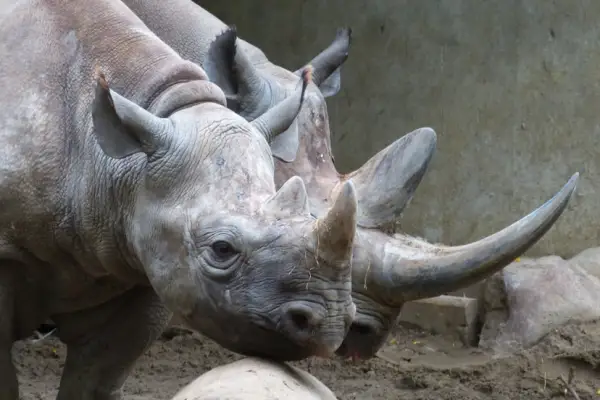
| Scientific name | Diceros bicornis michaeli |
| Habitat | highland forest and savanna habitat |
| Size | 2.8–3.75 m (9.2–12.3 ft.) |
| Diet | leafy plants, branches, shoots, thorny wood bushes, and fruit |
The Eastern black rhinoceros or the East African black rhinoceros are common names of Diceros bicornis michaeli. They have a more curved horn than other subspecies of black rhino.
Not only their horn but also their black eyes make them intriguing. Generally, they go for a food search at night or during dusk and dawn.
They are herbivorous and primarily feed on leafy plants, branches, and shoots, thorny wood bushes, and fruit.
Their numbers are decreasing so fast that the IUCN included them in the list of critically endangered species.
10. Black skimmer
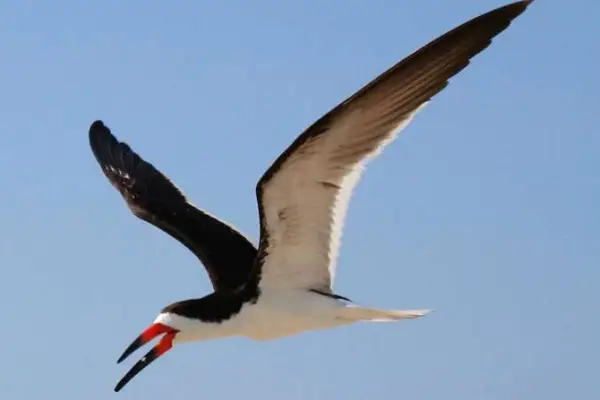
| Scientific name | Rynchops niger |
| Habitat | coastal areas, usually around sandy beaches and islands |
| Size | 40–50 cm (16–20 in) |
| Diet | Mostly fish |
These fish-eating birds are commonly found in North and South America. With a size of 40 to 50 cm, they become the largest of all the skimmer species.
Let’s talk about their appearance. They are black in color with a white underside and a red or black beak.
Their black eyes look so enthralling that it makes you wow at the sight. Their long and slender beaks give them the advantage of skimming over the water surface and grabbing food.
11. Guinea Pigs
| Scientific name | Cavia porcellus |
| Habitat | grassland habits |
| Size | 8-10 inches (20-25 centimeters) |
| Diet | Hay and grass |
Guinea pigs, also known as cavies, are popular among pet lovers. They have a distinctive face, short legs, and small ears.
As you can see, these rodents have jet black eyes, irrespective of sex. Popcorning is so evident in them, which means they hope a little when they feel happy.
12. Black Grouse
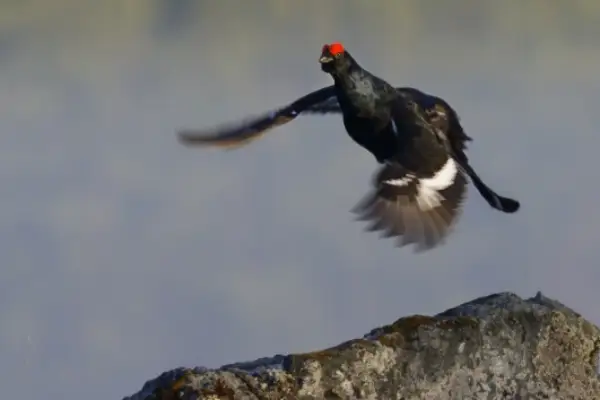
| Scientific name | Lyrurus tetrix |
| Habitat | forest, steppe, heathland, grassland and pasture |
| Size | 45 to 60 cm |
| Diet | buds, shoots, grass, and berries |
Have you ever seen a bird sport? Yeah, you heard me right—a sport that involves birds.
The bird we are going to talk about is one of those game birds that are hunted for sports.
Black grouses are the largest game bird of all. The thing that attracts me most about them is their plumage.
They are black in color with a white wingline, and there is a red spot on both of their eyes. Their black, glossy eyes are no less. You can spot them all across Europe and Russia.
13. Black Salamander
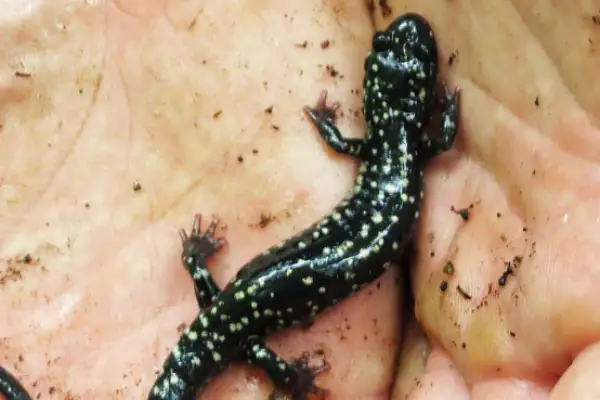
| Scientific name | Salamandra atra |
| Habitat | underneath stones or in rocky crevices in their mountainous habitat |
| Size | 144 to 151 mm |
| Diet | beetles, snails, millipedes, and spiders |
I just saw the picture and appreciate the beauty of nature.
These black salamanders are common in the mountain range of the French Alps and in Europe.
They exhibit melanism, which gives them a predominantly black appearance with enchanting black eyes.
They release some scent to mark their territory; females return to their home, but males enter another territory.
Juvenile forms of certain snakes love to feed on them.
14. Humboldt’s hog-nosed skunk
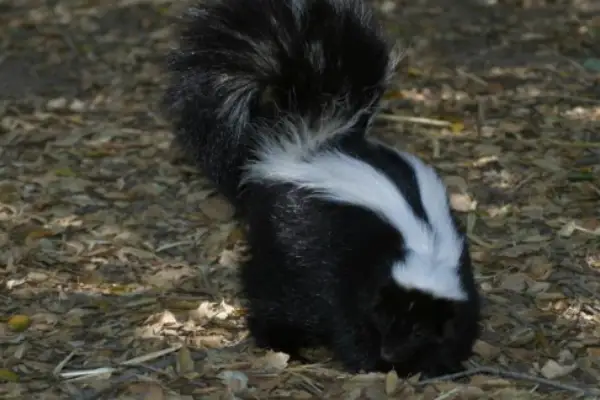
| Scientific name | Conepatus humboldtii |
| Habitat | Open grassy habitats to shrubs, forests, and mountainous areas |
| Size | 19.7 to 23.6 inches |
| Diet | Insects, rodents and carrion |
Aren’t their black eyes beautiful? People know Conepatus humboldtii by some common names, like Patagonian hog-nosed skunk and Humboldt’s hog-nosed skunk, etc.
They got these common names due to their upturned or hog-like snout. Two white stripes run along the dorsal surface of their brown body.
One can find them running in the open grassy areas of the Patagonian regions of South Argentina.
These omnivorous animals primarily feed on insects, rodents, and carrion.
15. Mallard
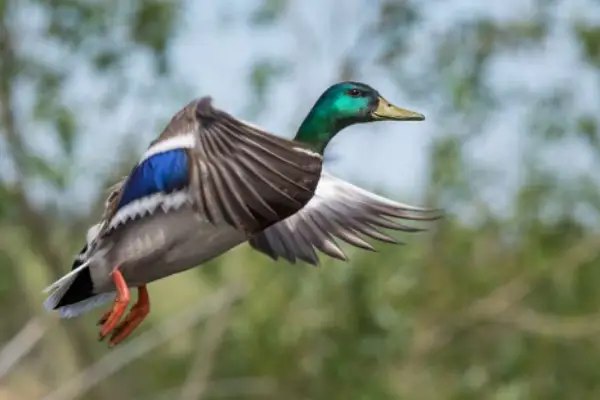
| Scientific name | Anas platyrhynchos |
| Habitat | Both fresh- and salt-water wetlands, including parks, small ponds, rivers, lakes and estuaries, |
| Size | 50–65 cm (20–26 in) |
| Diet | Gastropods, insects, crustaceans, other arthropods, worms, many varieties of seeds and plant matter, and roots and tubers |
Mallards are so beautiful and elegant that they will make you curious.
They exhibit dramatic sexual dimorphism and metallic black eyes.
Males have a glassy green head with a white collar, whereas females somewhat exhibit dull plumage with a dark brown color.
They are commonly found in the Americas, Eurasia, North Africa, New Zealand, Australia, Peru, Brazil, Uruguay, Argentina, Chile, Colombia, the Falkland Islands, and South Africa.
16. Black Guillemot
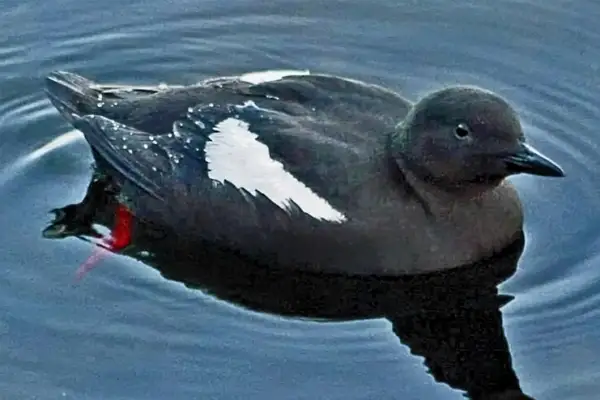
| Scientific name | Cepphus grylle |
| Habitat | Rocky ocean coasts and islands |
| Size | 30 to 32 centimeters |
| Diet | Small fish, crabs, worms, and mollusks |
Look at their red feet; they look fascinating, right? Let me introduce you to these red-footed animals, i.e., the black guillemot.
When you see these creatures, they have black plumage, a large white patch on the upper side of their wings, and a black beak or eyes.
You can find them on the northern Atlantic coasts and the eastern North American coasts. They got their food by diving in the ocean.
17. German yellow jacket wasp
| Scientific name | Vespula germanica |
| Habitat | underground or in hollow logs, tree stumps, attics, between walls |
| Size | up to 13 mm |
| Diet | honey, brood, dead and live honey-bees. |
Because German yellow jacket wasps and honeybees have similar appearances, people occasionally confuse the two.
They have a distinctive yellow and black striped pattern on their abdomen with shiny metallic black eyes.
By imitating their aggressive and stinging behavior other insects shields themselves from their predators.
18. House Mouse
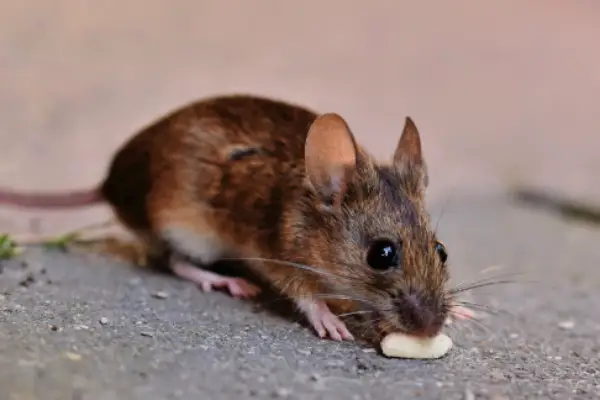
| Scientific name | Mus musculus |
| Habitat | agricultural fields, forests, and urban areas |
| Size | 7.5–10 centimeters (3–4 in) |
| Diet | seeds, grains, fruits, vegetables, and small insects |
People frequently adopt these creatures as pets or lab mice.
They are out and about in your area, even at home, jogging and walking.
They have developed to be able to live in a variety of environments, from residential skyscrapers to sandy dunes.
In terms of appearance, they come in a variety of hues, including champagne, black, white, and black with black doe eyes.
19. Oriental Bay Owl
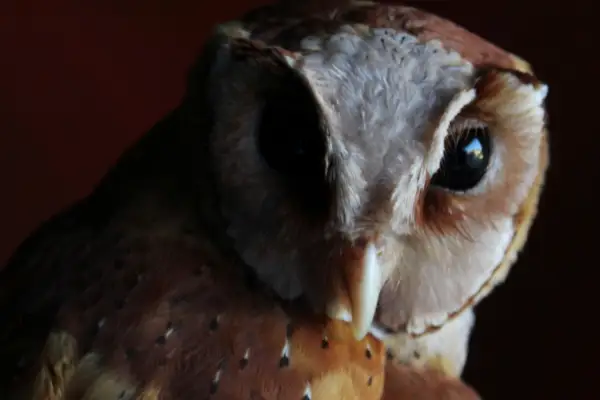
| Scientific name | Phodilus badius |
| Habitat | Tropical evergreen forests |
| Size | 22.5–29 cm |
| Diet | Small rodents, bats, birds, snakes, frogs, lizards, magpies, and large arthropods such as beetles, grasshoppers, and spiders |
Oriental bay owls are known for their heart-shaped faces and large, bulging black eyes.
They are commonly found all across Southeast Asia, but they are not very well known as they are rarely seen by people.
They are adapted in such an extraordinary way that they have the ability to survive 100 percent of the time.
High-pitched whistle sounds are so common in them, other than their hooting.
20. Meerkats
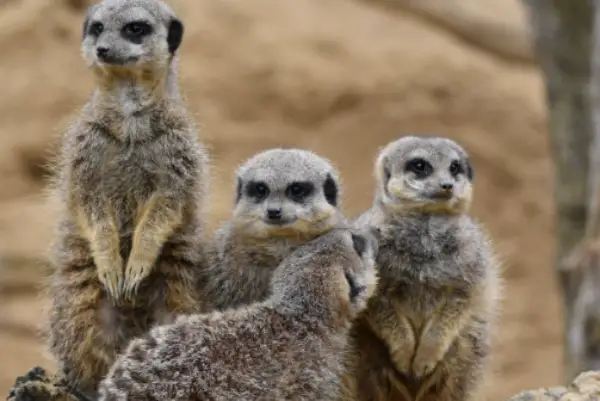
| Scientific name | Suricata suricatta |
| Habitat | Savannahs, open plains, and rocky areas |
| Size | 24–35 cm (9.4–13.8 in) |
| Diet | Beetles, butterflies, eggs, amphibians, reptiles, small birds, plants and seeds |
A broad head, large black eyes, a pointed snout, long legs, a thin, tapering tail, and a brindled coat pattern are the characteristic features of Suricata suricatta.
They are so vigilant that they immediately hide in their burrows in the event of danger.
Their diet is primarily composed of insects like beetles, butterflies, arthropods, amphibians, reptiles, small birds, plants, and seeds.
Their highly evolved thermoregulating mechanism aids in their survival in the hostile desert environment.
21. Adélie penguin
https://in.pinterest.com/pin/176414510396351986/
| Scientific name | Pygoscelis adeliae |
| Habitat | rocky, ice-free coasts |
| Size | 18”-28” (46-71 cm) |
| Diet | Antarctic Krill fishes, Antarctic silverfish, Squids, and Jellyfish |
Take a peek at their eyes; don’t they appear lovely? They are attractive because of their white eye ring encircling their dark black eyes.
They are commonly found on rocky, ice-free coasts in Antarctica. They exhibit migratory behavior; when they are about to breed, they migrate to the seashore for ice-free areas.
Antarctic krill fish, as well as some Antarctic silverfish, squids, and jellyfish, are highly favored by them.
22. Blanc de Hotot
| Scientific name | Oryctolagus cuniculus |
| Habitat | wooded areas such as forests and hedgerows |
| Size | 15–17 inches (38–43 centimeters) |
| Diet | grass hay, like meadow, oat, or Timothy hay |
Blanc de Hotot is another animal that has black eyes.
The greatest characteristics of the Blanc de Hotot are its black eye markings and white fur.
They are popular among bunny enthusiasts because of their kind and obedient disposition.
They were highly well-known at first for their flesh.
23. Giant Panda

| Scientific name | Ailuropoda melanoleuca |
| Habitat | Bamboo forests |
| Size | 1.2 to 1.9 meters |
| Diet | Primarily Bamboo and other grasses, wild tubers, or even meat in the form of birds, rodents, or carrion |
These black-and-white creatures are very common in the bamboo forests of China.
These bear-shaped animals exhibit disruptive coloration and huge black eyes, which makes them unique.
Despite being carnivorans, their diet is composed of plants, primarily bamboo leaves and shoots.
They developed many anti-toxic mechanisms as their diet contained a high amount of cyanide.
You can find pandas lazying around all day except for dawn and dusk.
24. Ayam Cemani
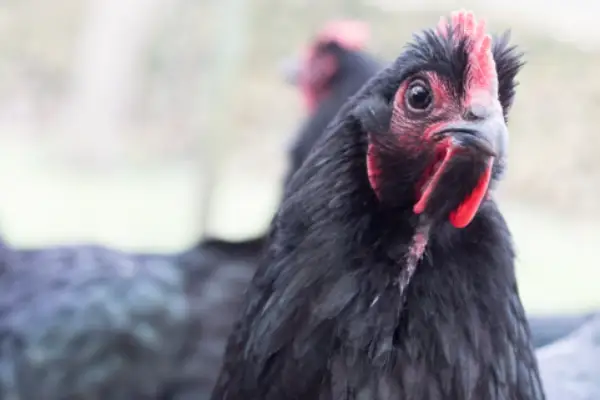
| Scientific name | Ayam Cemani |
| Habitat | Tropical climates |
| Size | up to 12.5 cm |
| Diet | Grains, seeds, vegetation, insects, grubs, fruit, and vegetables |
Ever observed a chicken with an all-black appearance? It sounds intriguing, doesn’t it? There are actual chickens like this.
Allow me to present Ayam Cemani to you. This native of Indonesia suffers from fibromelanosis, a hereditary disorder that causes all of their feathers, bones, internal organs, blood, and eyes to be black.
You can see that they are steady, silent flyers, and they are highly clever and energetic.
25. Black rat snake
| Scientific name |
Pantherophis obsoletus
|
| Habitat | bayou, prairie, and rock outcrops |
| Size | 106.5–183 cm (3 ft. 6 in – 6 ft. 0 in) |
| Diet | meat, bone, offal, and a small amount of plant ingredients |
Western rat snake, black rat snake, pilot black snake, or simply black snake are some of the common names of Pantherophis obsoletus.
Their juvenile forms are grayish in color with distinct blotches. As they grow older, they turn a glossy black color and have shiny black eyes.
They mimic the sound of a rattlesnake, but instead of biting, they suffocate their victim until they die.
26. Raccoon
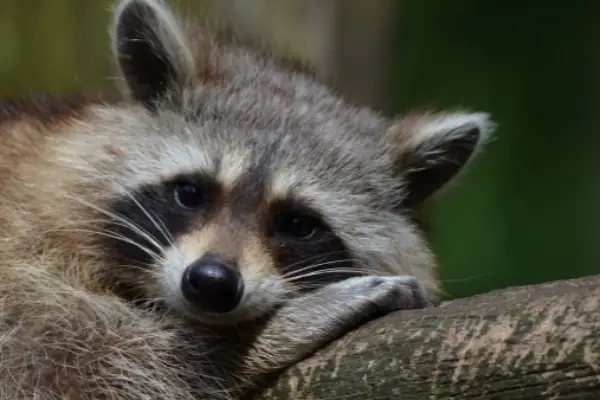
| Scientific name | Procyon lotor |
| Habitat | wooded areas near streams, ponds, and marshes |
| Size | 23 to 38 inches |
| Diet | nuts, berries, fruits, corn, and grains |
Dexterous front paws are the most distinctive features of raccoons. They look like medium-sized bears.
The black fur on their faces looks like a mask that surrounds their black eyes.
One can spot them in Belize, Canada, Costa Rica, El Salvador, Guatemala, Honduras, Mexico, Nicaragua, Panama, and the United States, in advertising from cold grasslands to warm, tropical areas.
I got to know about the most interesting thing about their cubs: that they usually chatter, whine, or tweet like birds when they feel hungry.
27. Powder Blue Surgeonfish
| Scientific name | Acanthurus leucosternon |
| Habitat | Tropical water sources |
| Size | Up to 23 cm (9 in) |
| Diet | Mostly algae |
Blue surgeonfish, powder blue tang, and powder-blue surgeonfish are some of the common names of Acanthurus leucosternon.
Their erect spine portion is situated near the base of the tail, and it has a look similar to the scalpel of a doctor.
This diurnal surgeonfish strikes other fish with aggression and a gloomy demeanor.
People can easily find them in the Indian Ocean.
They have a small mouth, a crescent-shaped body, black eyes, and transparent pectoral fins, which are some of their appearance traits.
28. Black moor goldfish

| Scientific name |
Carassius auratus
|
| Habitat | Fresh inland waters and wetlands in temperate regions |
| Size | Up to 30 cm |
| Diet | Insects, insect larvae, crustaceans, plants, and eggs of insects |
Black moor goldfish are known for their large, protruding, black eyes.
They can attain a large size of up to 30 cm and can live for 15 to 20 years.
Bloodworm, Mysis, and Daphnia are the primary food sources for this fish.
They usually mate when the temperature starts elevating.
Not only black coloration but also blue, chocolate, red, white, red cap, white, yellow, and calico can also occur.
29. Black capped squirrel monkey
| Scientific name | Saimiri boliviensis |
| Habitat | lowland tropical rain forests and gallery forests |
| Size | 225 to 370 mm |
| Diet | fruits, insects, eggs, small vertebrates, arachnids, leaves, flowers, nuts, seeds, and rarely fungi |
The black-capped squirrel monkey’s name comes from its distinctive black head and white circles surrounding its intense black eyes, which some have dubbed the Roman arch.
You can spot these creatures in Peru, Bolivia and Brazil. They can leap a significant distance—roughly one to two meters—quite effortlessly.
These omnivorous animals love to eat fruits, insects, eggs, small vertebrates, arachnids, leaves, flowers, nuts, seeds, and rarely fungi.
30. Eurasian penduline tit
| Scientific name | Remiz pendulinus |
| Habitat | lakeside and riverine swampy vegetation |
| Size | 10–11.5 cm |
| Diet | Seeds, insects and spiders |
The Eurasian penduline tit is a bird species that you can spot very easily in the western Palearctic region.
Let’s discuss how they looked. They are a little gray in color with the brown wings and have a characteristic black pattern all around their beautiful black eyes, which makes them distinct.
They crafted grass, wool, hair, and plant fibers into a pouch-shaped nest.
Also Read:
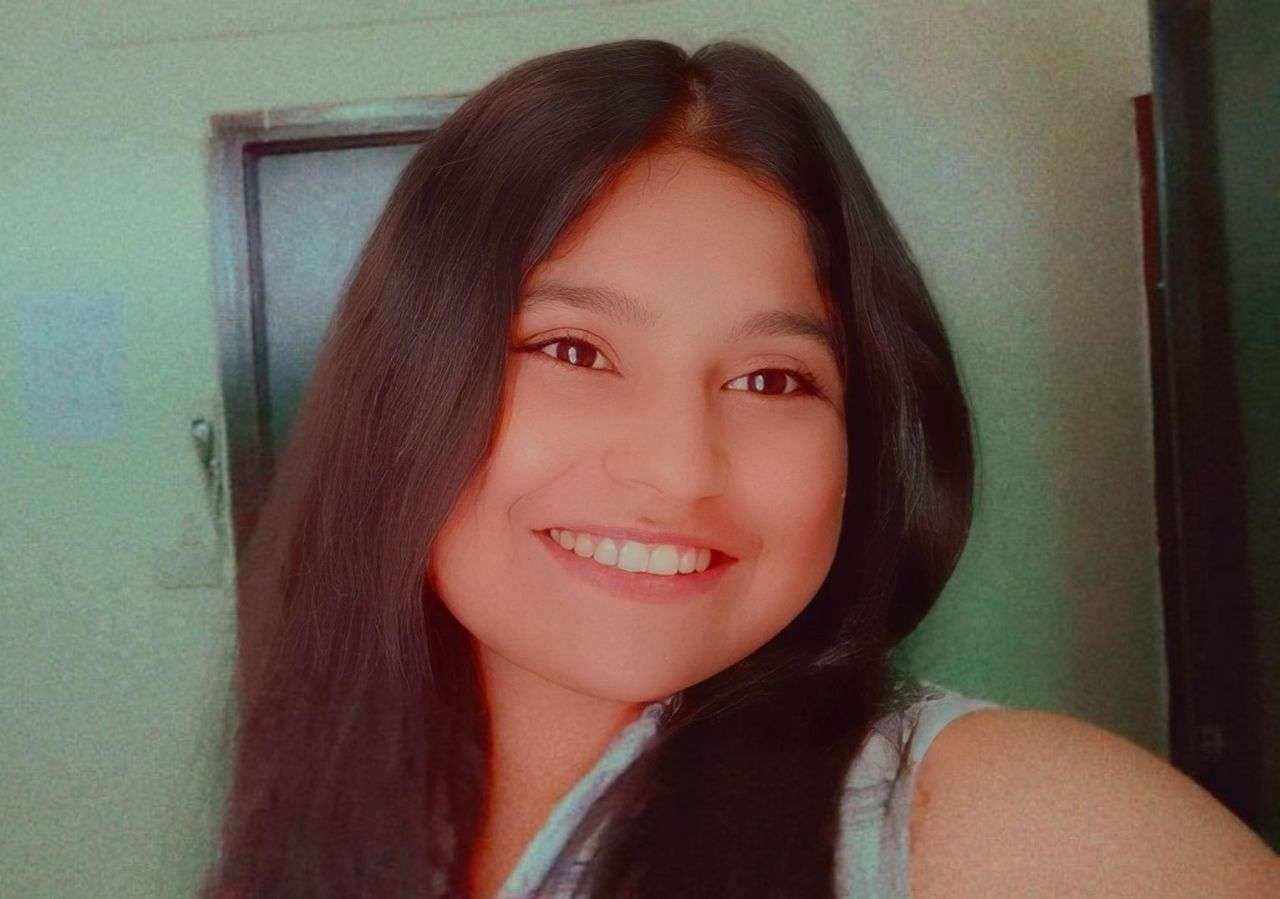
Being a zoology student I’m always been fascinated toward animals especially insects. I love to do research and learn about different animals. As a writer I want to share my thoughts about nature through my articles. Apart from this you can find me exploring the new places and voice notes.

